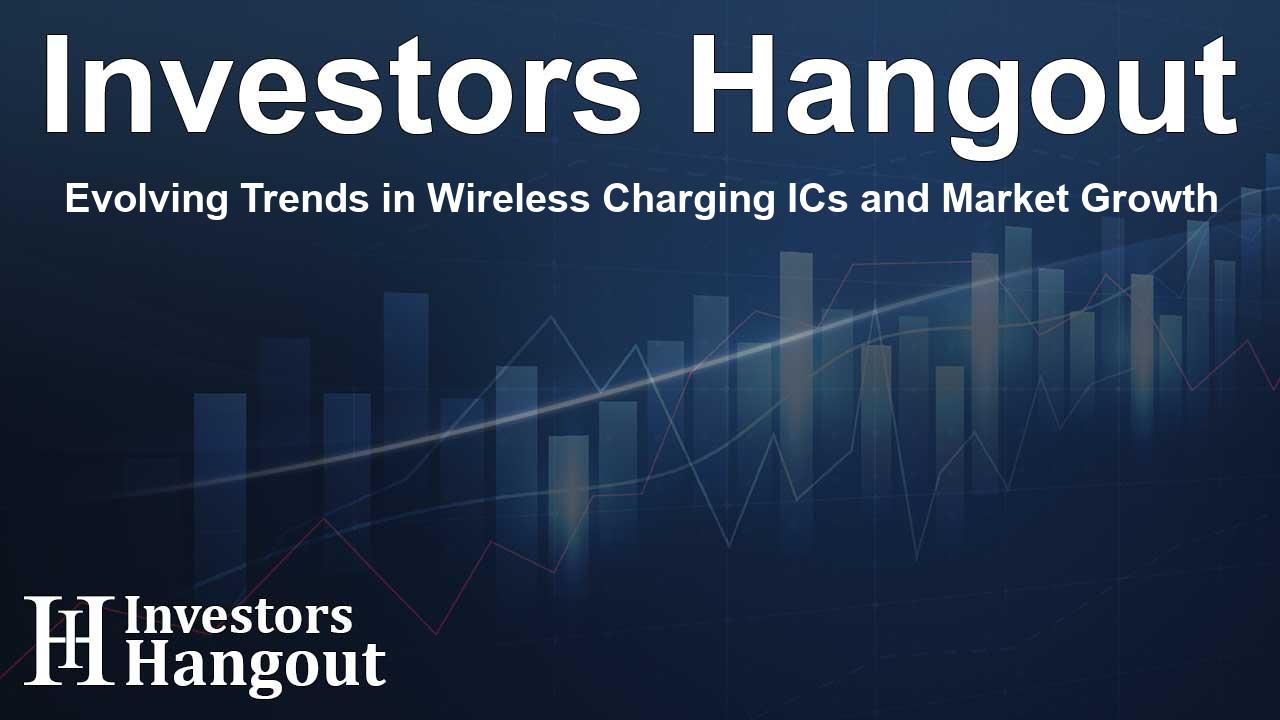Evolving Trends in Wireless Charging ICs and Market Growth

Wireless Charging ICs Market Outlook: 2025 to 2034
The wireless charging integrated circuits (ICs) market is poised for remarkable growth, significantly influenced by advancements in smartphone technologies. Companies are constantly seeking to embed innovative features into their flagship devices, making wireless charging an appealing option. This surge in demand can be attributed to the convenience offered by wireless charging solutions, which are becoming faster, more reliable, and user-friendly.
Driving Forces Behind Market Growth
As innovative chipsets designed for wireless power rapidly increase production, the allure of wireless charging systems becomes even more compelling. The automotive sector is one of the driving forces, as many new vehicles are now equipped with advanced wireless charging capabilities, which enhance user convenience.
Advances in Wireless Technologies
Detailed research indicates a growing preference for transmitter-based wireless charging ICs and effective receiver panels. Users are favoring wireless charging over conventional wired methods due to the elimination of cable clutter, reduction of device wear, and compatibility across numerous smartphone brands.
Safety and Reliability
Another key driver in this booming market is the enhanced safety that wireless charging provides. By eliminating physical connections, users can enjoy secure power transfer that minimizes the risk of data theft and ensures device integrity, paving the way for a broader acceptance of wireless solutions.
Future Market Projections
The sleek, modern designs of wireless charging systems not only attract consumers but also drive a shift in adoption rates. Although speed and efficiency have traditionally favored wired charging, the growing preference for convenience and innovative solutions hints at a bullish CAGR for this market through to 2034.
Short-term Growth (2025-2026)
In the immediate future, the integration of wireless charging technology into consumer electronics is expected to rise, particularly in healthcare, where there is a demand for contactless and sterile power solutions.
Mid-term Challenges (2027-2029)
The upcoming years may present challenges, including potential economic slowdowns that could impact innovation and research initiatives in the sector. However, the long-term growth outlook remains positive as new automotive technologies and consumer electronics continue to embrace wireless charging.
Long-term Growth Prospects (2030-2034)
As wireless charging ICs transition further into mainstream electronics, we anticipate significant adoption across electric vehicles, flagship smartphones, and smart wearables. The industry may witness a robust CAGR of about 19.5%, fueled by efficiency improvements and the growing incorporation of wireless power technologies.
Key Market Drivers and Trends
- Enhanced Charging Convenience: The removal of physical connectors leads to reduced wear and improved usability.
- Integration with Electric Vehicles: The rise of electric vehicles is generating new opportunities for wireless charging technologies.
- Diverse Applications: High demand in healthcare and industrial sectors ensures continuous development of wireless charging solutions.
- Innovative Charging Technologies: New trends such as drop-and-charge solutions are enhancing user experience.
Regional Insights
USA: Leading the Wireless Technology Sector
- Market CAGR (2025-2034): 14.8%
- Projected Market Value (2034): US$ 2.0 Billion
- Key Growth Drivers:
- Presence of industry leaders in wireless technologies.
- Investment in advanced R&D initiatives for power systems.
South Korea: The Fastest Growing Region
- Market CAGR (2025-2034): 21.2%
- Market Value (2034): US$ 1.1 Billion
- Growth Drivers:
- High-efficiency charging solutions.
- Research into long-range charging technologies.
China: A Global Manufacturing Hub
- Market CAGR (2025-2034): 18.5%
- Market Value (2034): US$ 1.3 Billion
- Growth Drivers:
- Strong production capabilities in IC technology.
- Adoption of universal wireless charging standards.
Competitive Landscape
Market leaders include:
- Convenient Power HK Ltd.
- WiTricity Corporation
- Murata Manufacturing Co., Ltd.
- Texas Instruments, Inc.
- Qualcomm Technologies, Inc.
Frequently Asked Questions
1. What is the projected growth rate of the wireless charging ICs market?
The wireless charging ICs market is expected to see a CAGR of approximately 18.3% from 2025 to 2034.
2. What factors are driving the demand for wireless charging ICs?
The demand is driven by smartphones' advanced technologies, the convenience of wireless systems, and significant safety improvements.
3. How does wireless charging compare to wired methods?
Wireless charging eliminates wiring hassles while providing a secure and user-friendly experience despite traditional wired methods being faster.
4. In which sectors is wireless charging technology gaining traction?
It's gaining popularity across consumer electronics, healthcare, and automotive industries.
5. Who are the major players in the wireless charging market?
Key players include WiTricity Corporation, Qualcomm Technologies, and Murata Manufacturing, among others.
About Investors Hangout
Investors Hangout is a leading online stock forum for financial discussion and learning, offering a wide range of free tools and resources. It draws in traders of all levels, who exchange market knowledge, investigate trading tactics, and keep an eye on industry developments in real time. Featuring financial articles, stock message boards, quotes, charts, company profiles, and live news updates. Through cooperative learning and a wealth of informational resources, it helps users from novices creating their first portfolios to experts honing their techniques. Join Investors Hangout today: https://investorshangout.com/
Disclaimer: The content of this article is solely for general informational purposes only; it does not represent legal, financial, or investment advice. Investors Hangout does not offer financial advice; the author is not a licensed financial advisor. Consult a qualified advisor before making any financial or investment decisions based on this article. The author's interpretation of publicly available data shapes the opinions presented here; as a result, they should not be taken as advice to purchase, sell, or hold any securities mentioned or any other investments. The author does not guarantee the accuracy, completeness, or timeliness of any material, providing it "as is." Information and market conditions may change; past performance is not indicative of future outcomes. If any of the material offered here is inaccurate, please contact us for corrections.